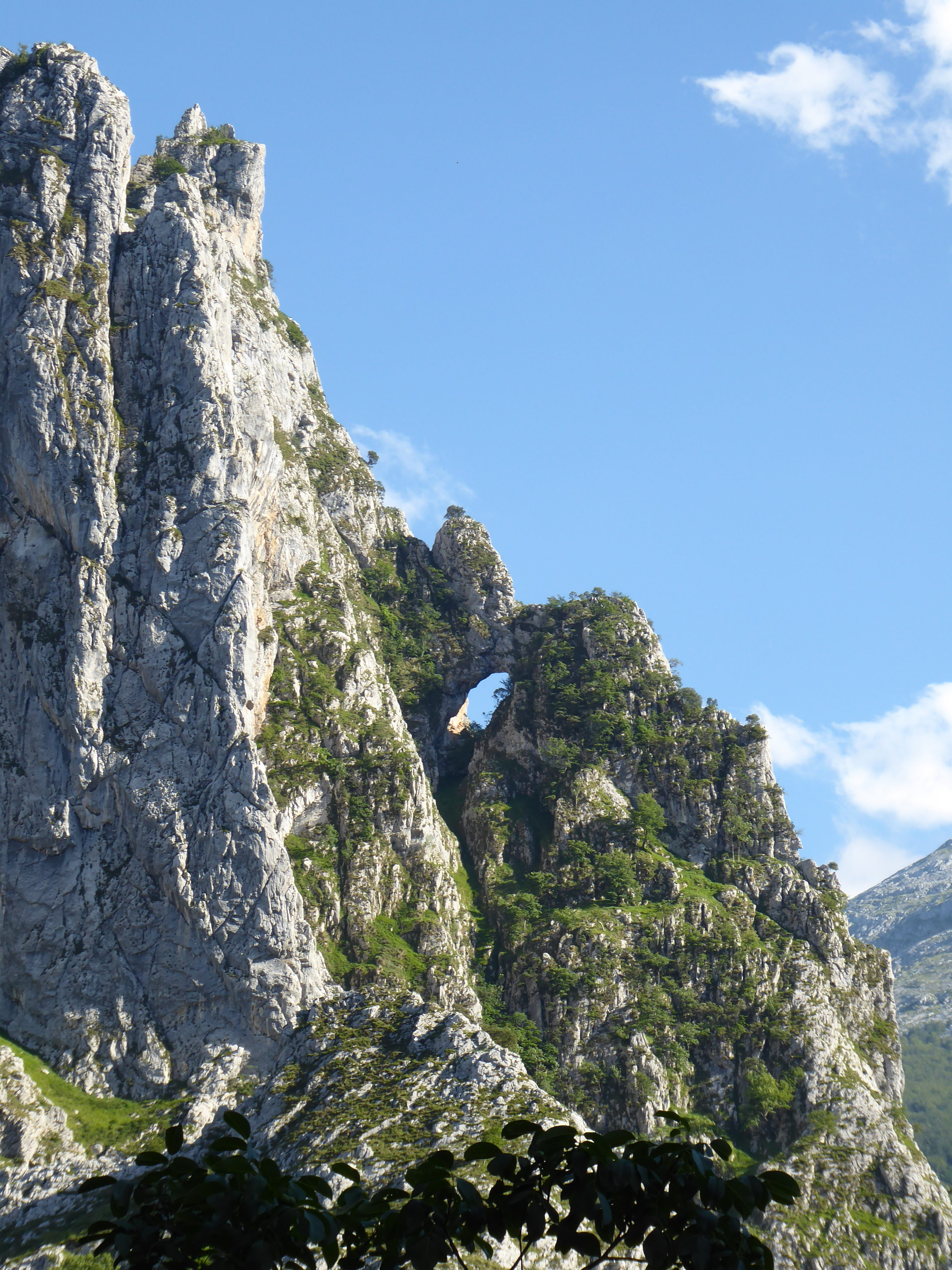 The dry plains of the Castilla y León region of Spain offers splendid countryside, castles, medieval towns and some interesting driving experiences (Some roads seemed designed for two narrow horse carts to pass each other rather than two cars, but fortunately these roads have very sparse traffic.). Medinaceli, Santillana del Mar, and other ancient towns were stunning and ranged dramatically in their onslaught of tourists. Some, like Segovia, had remnants of their ancient Roman inhabitants on display.
The dry plains of the Castilla y León region of Spain offers splendid countryside, castles, medieval towns and some interesting driving experiences (Some roads seemed designed for two narrow horse carts to pass each other rather than two cars, but fortunately these roads have very sparse traffic.). Medinaceli, Santillana del Mar, and other ancient towns were stunning and ranged dramatically in their onslaught of tourists. Some, like Segovia, had remnants of their ancient Roman inhabitants on display.
The great civilization of Rome is recent however, when compared to those who drew in the caves of Altamira. I waited in line to see the remarkable replica of this prehistoric art. Computer analysis and painstaking efforts recreated the cave with its every facet and smudge. The original cave, just a moments walk away, is now open only one day each week for a few lucky lottery winners. Looking at the reproductions of the drawings gave me much to ponder about humankind’s past and development. The technology used to create a copy is an extraordinary statement in itself. I found walking through the facsimile remarkable, yet soulless.
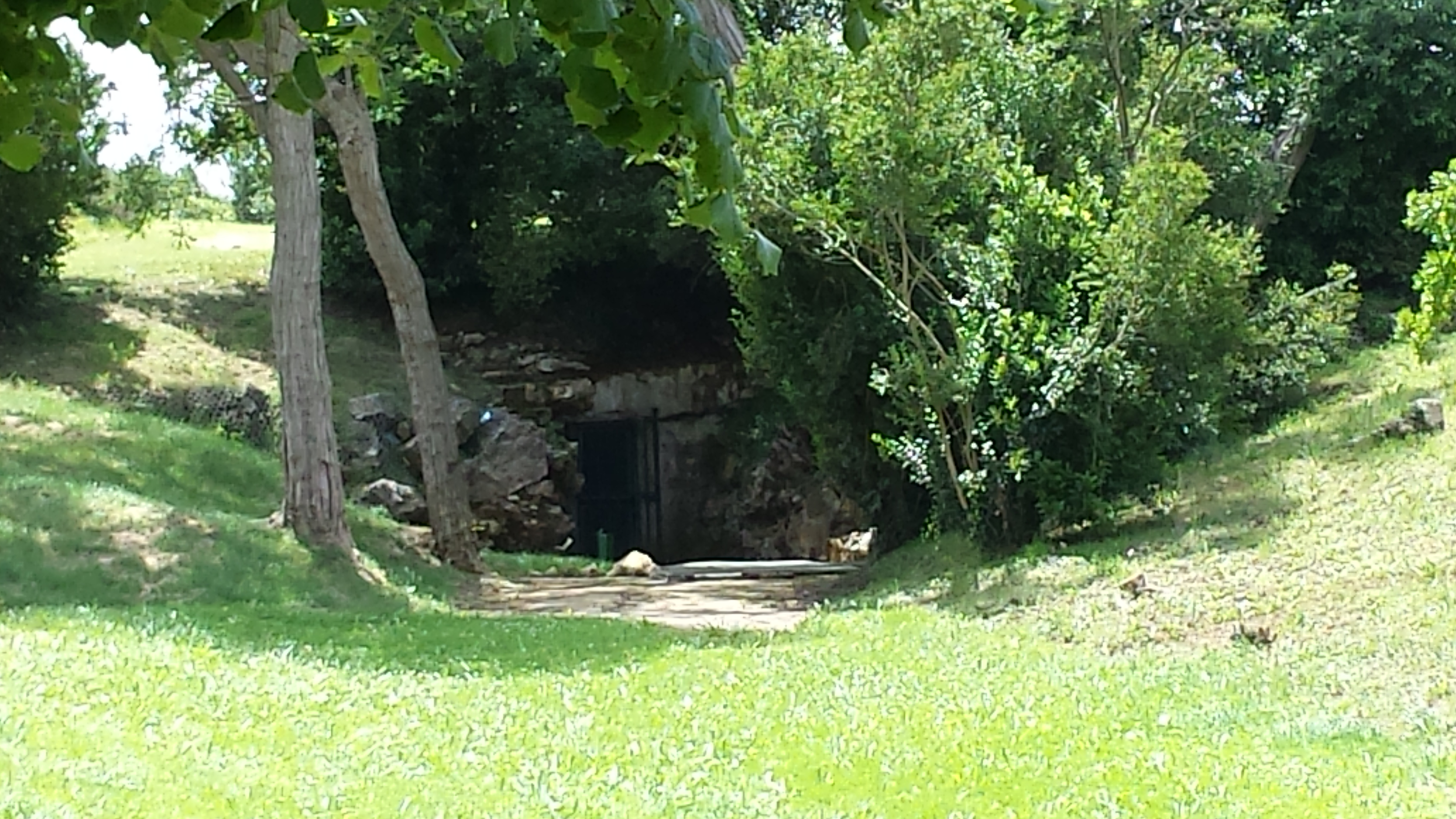
My intention to get to less touristy destinations on the northern coast was interrupted by a stop in the Picos of Europa- a region I had never heard of. And although I did not escape the tourists, I was distracted by its extraordinary beauty. Turquoise rivers flow into vibrant waterfalls. Jagged mountains rise high against blue skies and contrast with verdant pastures below. Incredibly picturesque villages set against startling peaks offer visual feasts of color and form. And hiking trails abound.
I drove along a windy scenic road to the Teleférico de Fuentes Dé not knowing what to expect, but it was listed among the “must dos”. I joined a line of people waiting to be jettisoned up in a cable car suspended by, what looked like a few flimsy cables, nearly 2500 feet to a sheer wall of mountain. There were some nervous tourists as we inched along, but no one backed off the line. When we arrived at the top the air seemed thinner and long horned goats lazed about. A dirt road led to open land and high rocky peaks where sheep, goats, and horses roamed freely. The quiet surroundings was punctuated with the clang of bells worn around the goats’ necks (One horse wore one too. I wondered what (s)he had done to warrant it.).
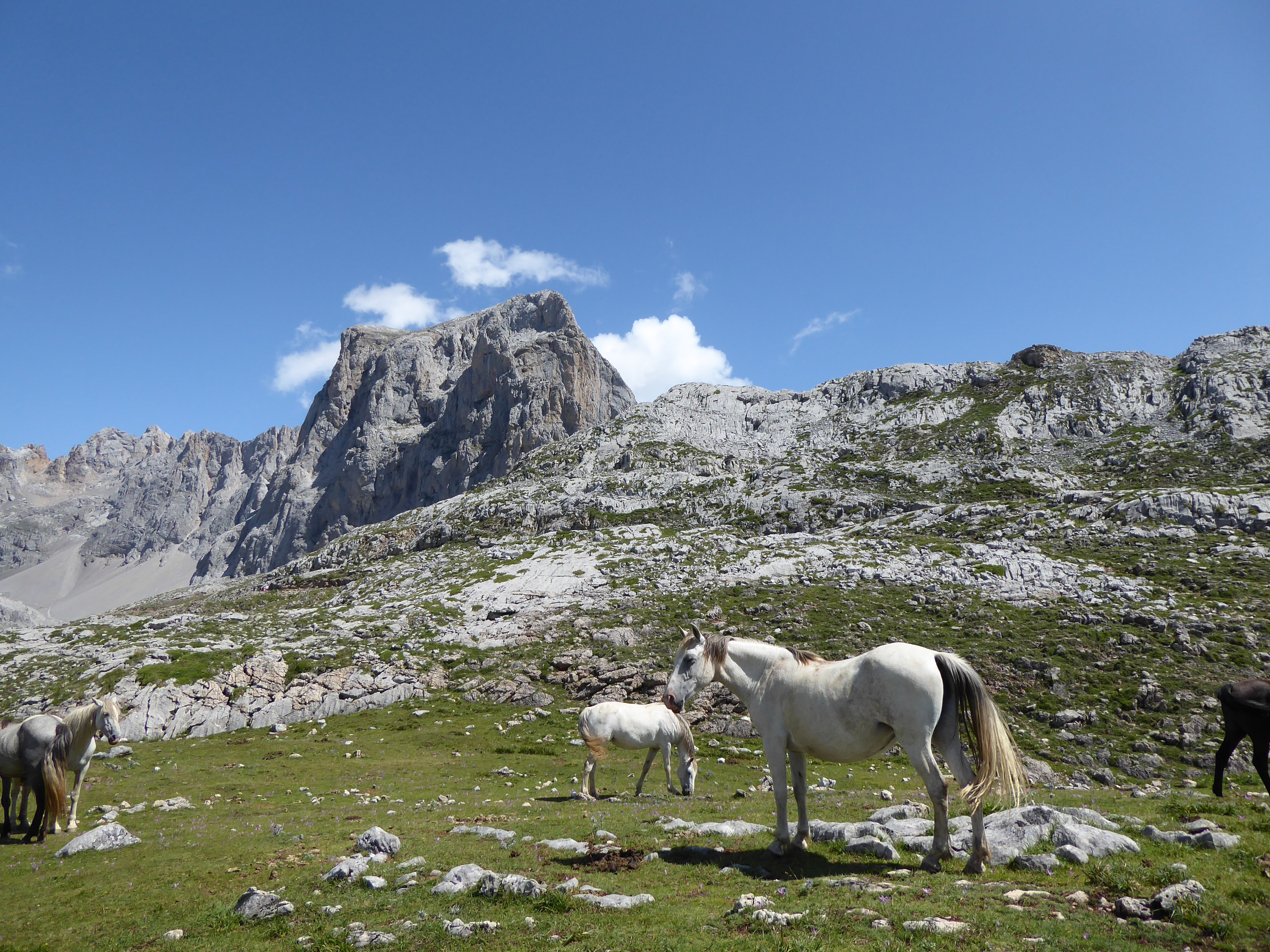
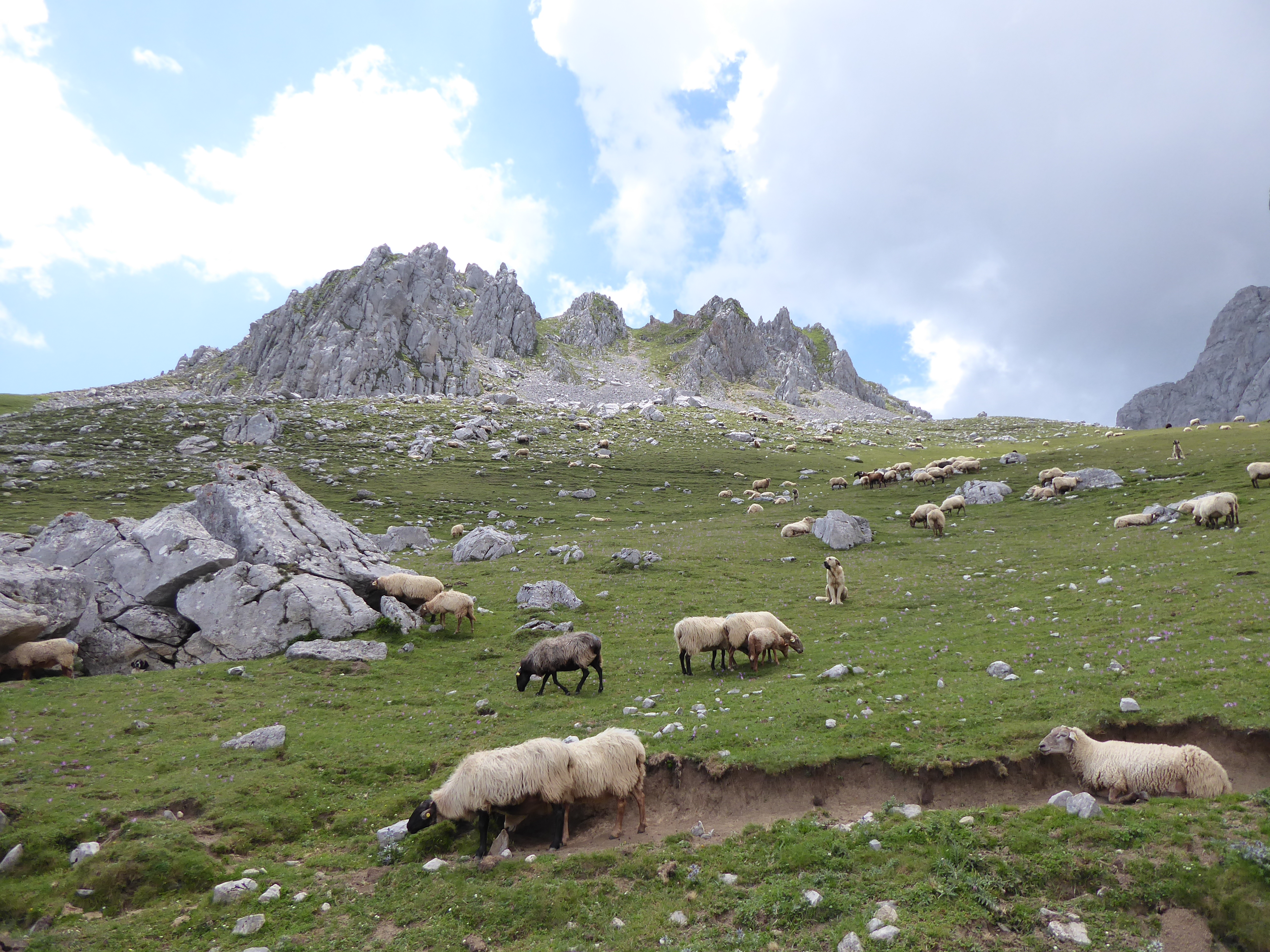
The trails, depending on one’s desire and ability, offer hours or days of mountain trekking, fresh air, and views. I was rewarded with a few hours of a steep but gorgeous hike. The path offered no concern, but a pack of massive herd dogs suddenly ran toward me, rightly protecting their flock of sheep, and had me scrounging quickly for a few hearty rocks just in case my aggressive don’t-mess-with-me-alpha-female shout and stance wasn’t enough to intimidate them- fortunately they were all bark, but quite the bark! They soon ambled back to blend in with their surroundings. As I continued along, despite clear skies offering views for miles- a fog quickly consumed me and my visibility was reduced to a few meters. I walked slowly not wishing to lose track of my direction. Within moments the fog lifted. Later I saw a park poster advising anyone caught in a fog to find the nearest shelter and wait there. If the fog persisted finding the shoes on my feet may have been a challenge.
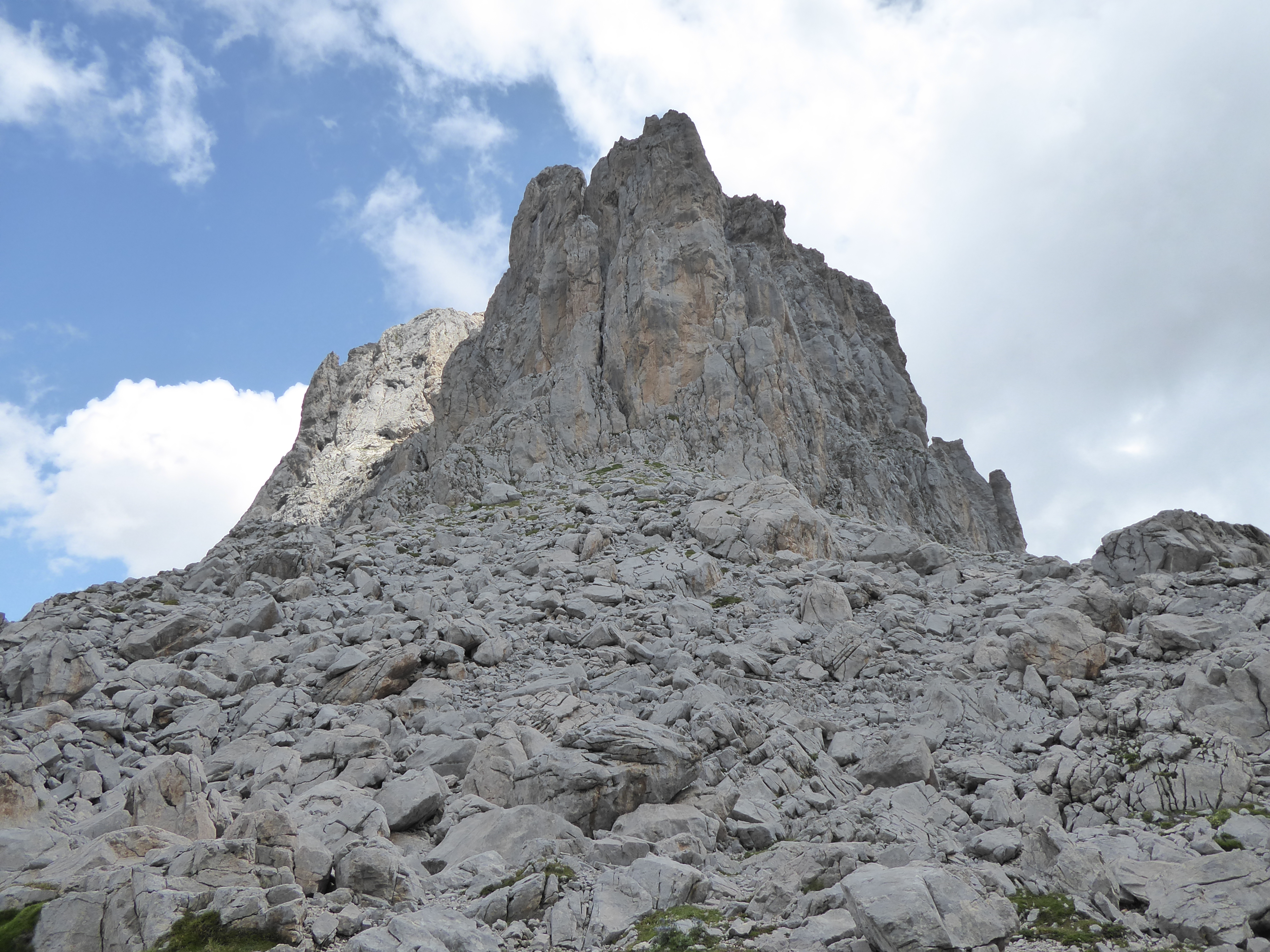
Back on the road red tile-roofed stone houses from centuries past dotted the landscape. Some gathered in clusters forming communities at the end of winding narrow roads on hill tops. And then there is Bulnes. For centuries this village was only accessible by footpaths. Goods were carried or brought up by mules 5kms-until a funicular was built in 2000. Apparently the funicular which travels inside the mountain 2km (I took a ride expecting splendid views…but the engineering achievement is a marvel.) was built for the residents before the population, which at its height may have been a hundred or so, dwindled down to five. Now it is used primarily by tourists and locals from towns below who go up for a meal or drink and enjoy the calm and admire the view.
I had lunch by a river in one of the few charming outdoor cafes, then walked to the farthest end of town to the Mirador de Lallende cafe before the path drops into the valley. The owner of the cafe, who is one of the last original residents, was there with his wife and son. A photograph of the owner as a boy outside the cafe-then his home-photos of his parents, and a brief discussion on those who passed on or moved away conjured a way of life lost in time.
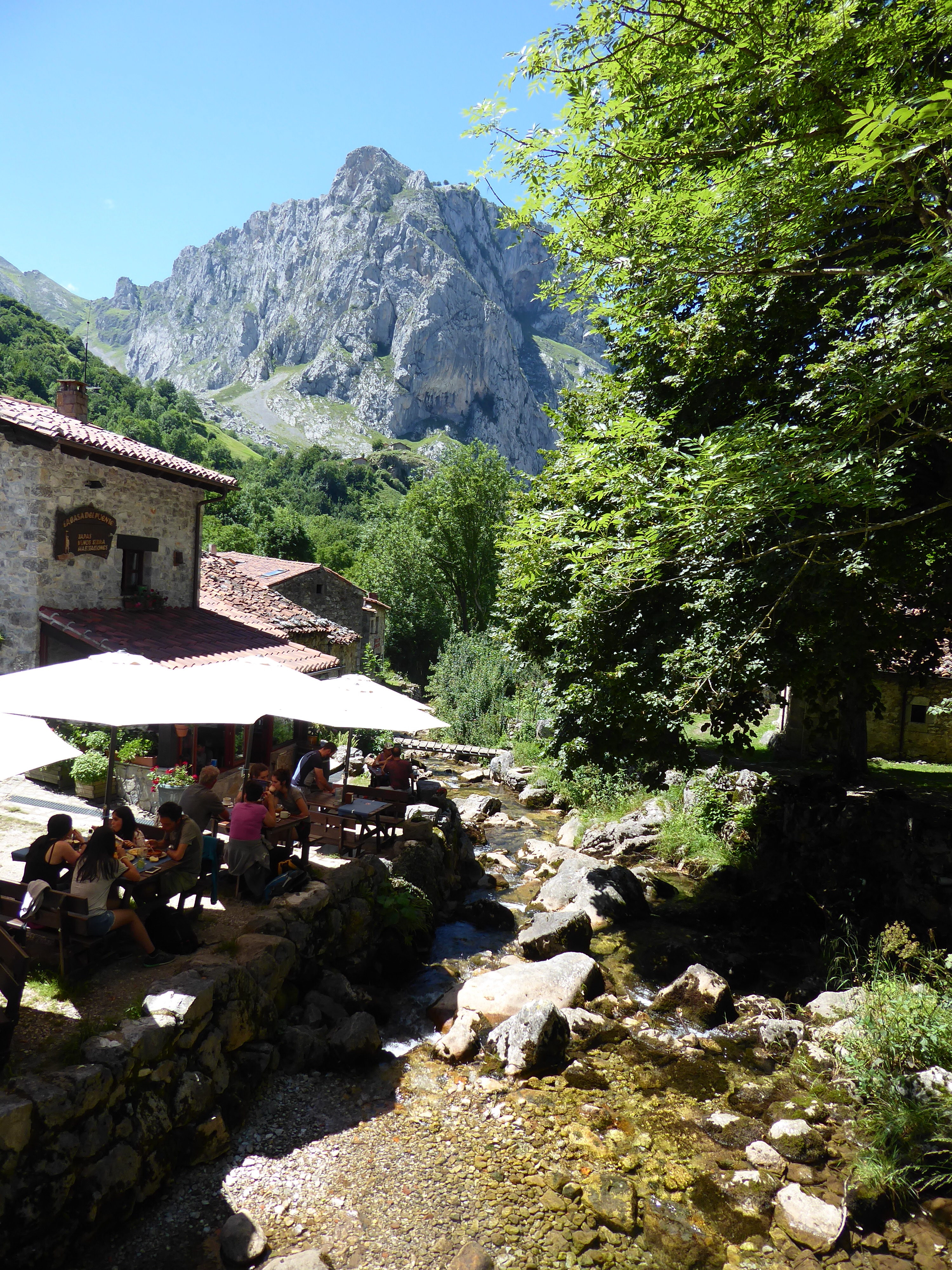
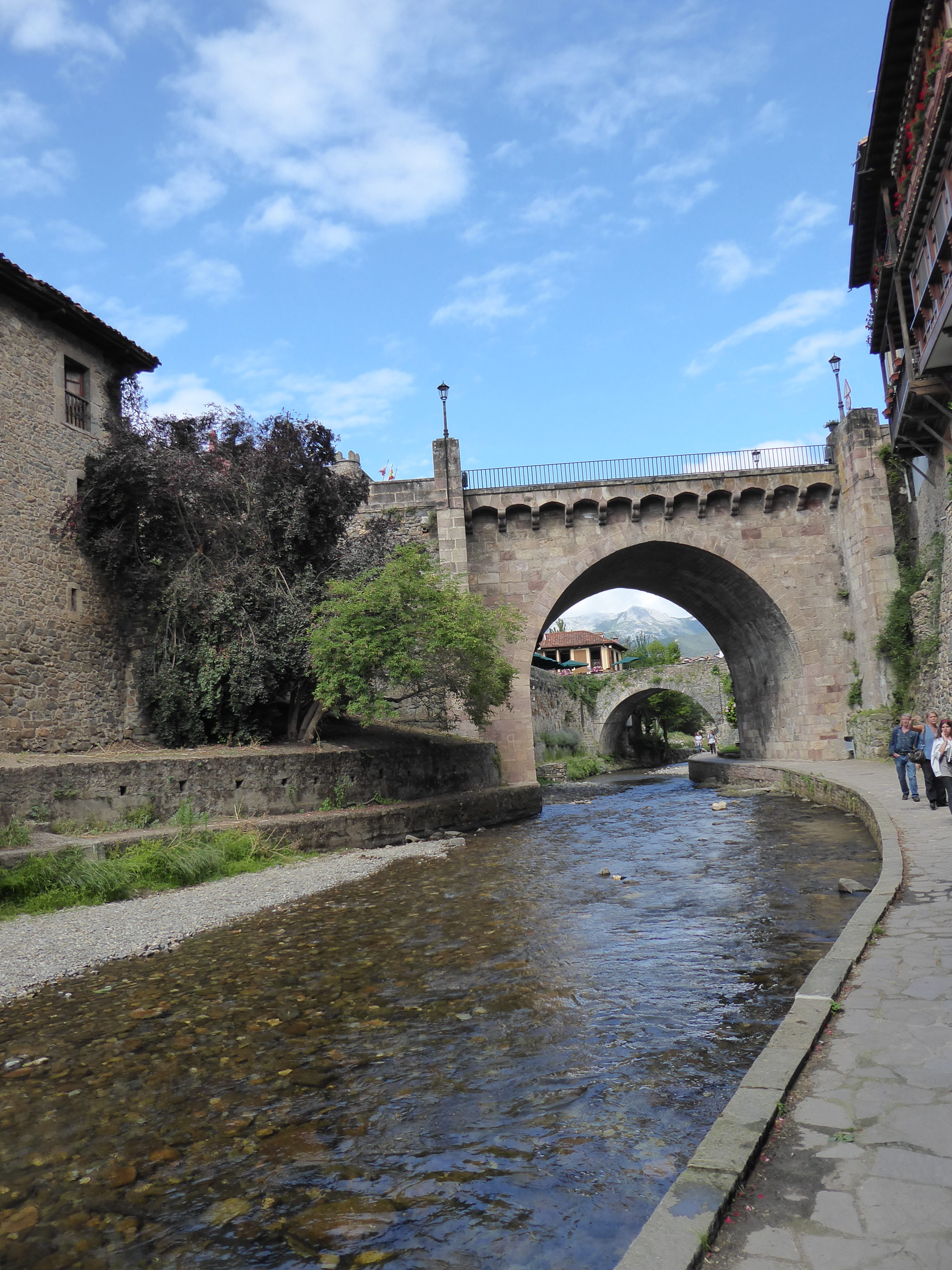
The hard cider flows freely in this region and there is a warmth to the people contrasting with its rigid peaks. Potes is a small, touristy, but delightful town in the Picos where I spent a few nights. Regional dishes and local delicacies of sausage and cheeses are sold in the shops and cafés and accompanied with the cider. When served in bars the cider is dramatically poured from arms length overhead or through a contraption to provide that added air. Only large bottles were sold and I was obliged to buy one.
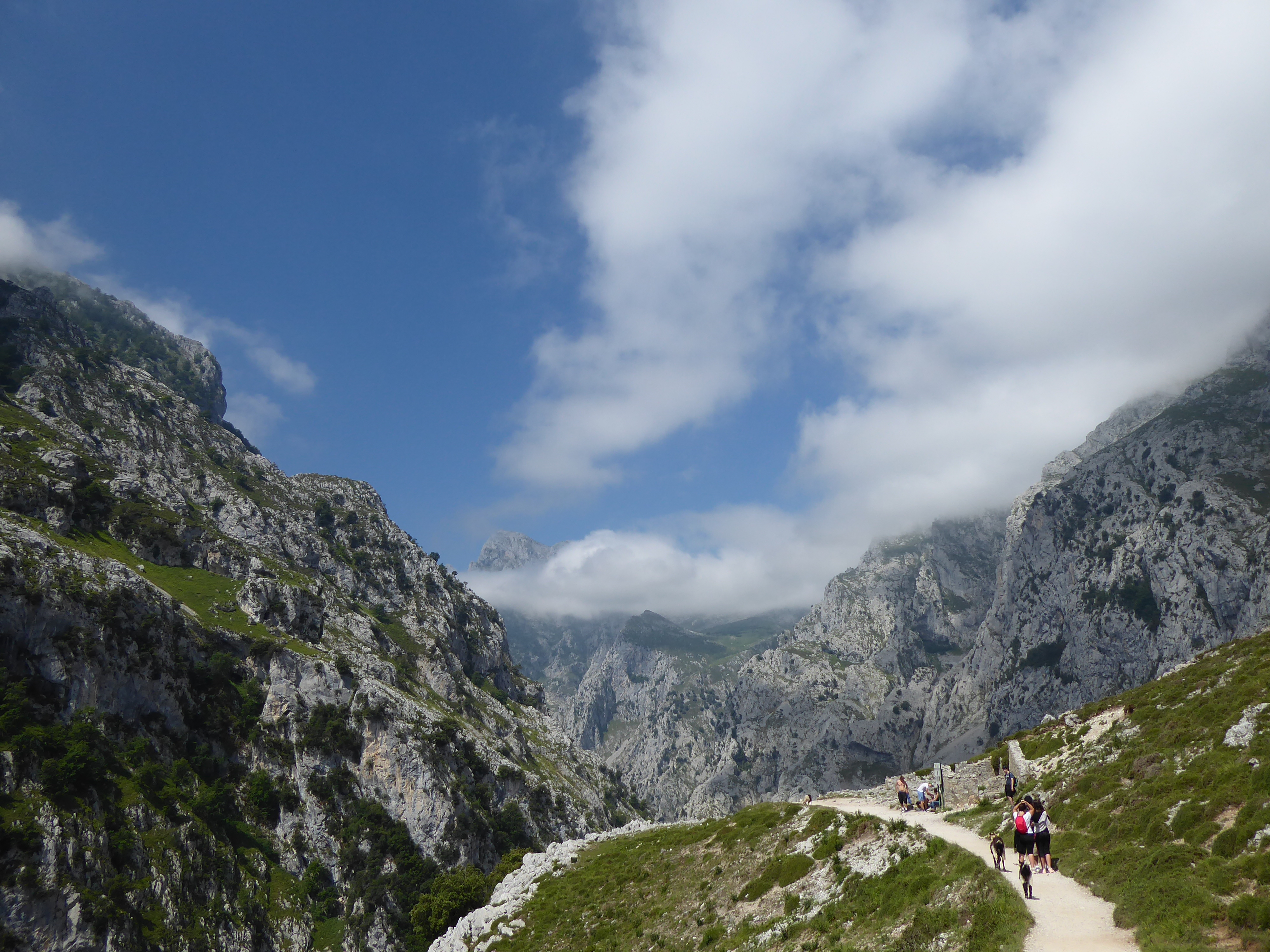
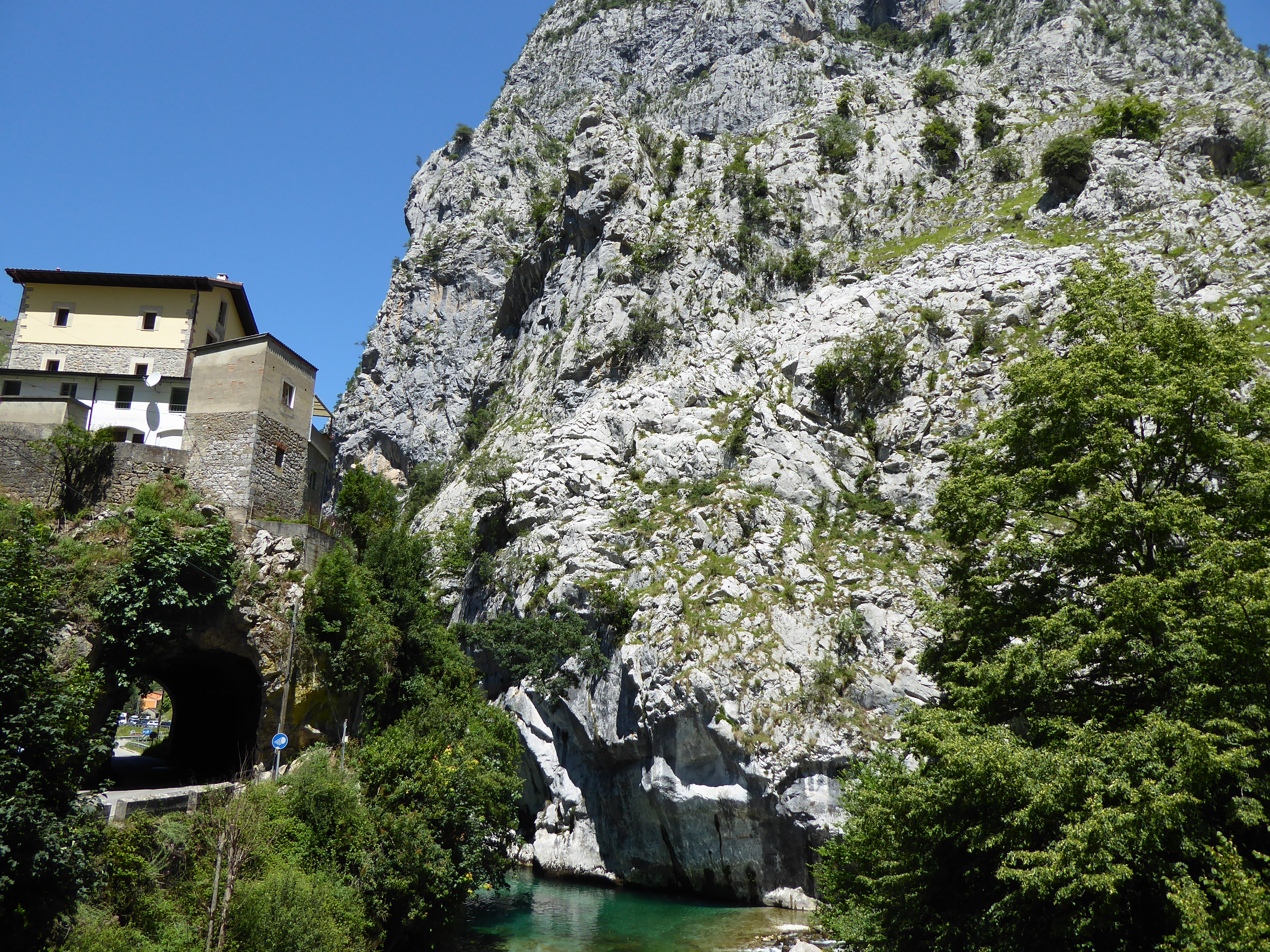 Another “must do” in the Picos is the 12 km hike, Ruta del Cares. The man-made trail cut through rock follows a water way for hydraulic energy. And connects the tiny strip of a town, Poncebos, with the charming Caín. The path from Poncebos is mostly flat, except for the initial 3km climb. It offers extraordinary vistas and precipitous drops, but is wide enough for two or three ample bodies to pass each other. The landscape and engineering feats are extraordinary. Many hike or take a bus back from Caín the same day. I decided to find a room in one of the three small hotels and watched the crowds empty out as evening set in. There was just a handful of tourists left in this picturesque hamlet . A few older local men sat at the outdoor cafes, with their dogs, chatting and smoking cigarettes. Women were elsewhere. I walked the few cobbled streets savoring the beautiful sky, peaks, rivers and stone homes while noting the many cats in residence.
Another “must do” in the Picos is the 12 km hike, Ruta del Cares. The man-made trail cut through rock follows a water way for hydraulic energy. And connects the tiny strip of a town, Poncebos, with the charming Caín. The path from Poncebos is mostly flat, except for the initial 3km climb. It offers extraordinary vistas and precipitous drops, but is wide enough for two or three ample bodies to pass each other. The landscape and engineering feats are extraordinary. Many hike or take a bus back from Caín the same day. I decided to find a room in one of the three small hotels and watched the crowds empty out as evening set in. There was just a handful of tourists left in this picturesque hamlet . A few older local men sat at the outdoor cafes, with their dogs, chatting and smoking cigarettes. Women were elsewhere. I walked the few cobbled streets savoring the beautiful sky, peaks, rivers and stone homes while noting the many cats in residence.
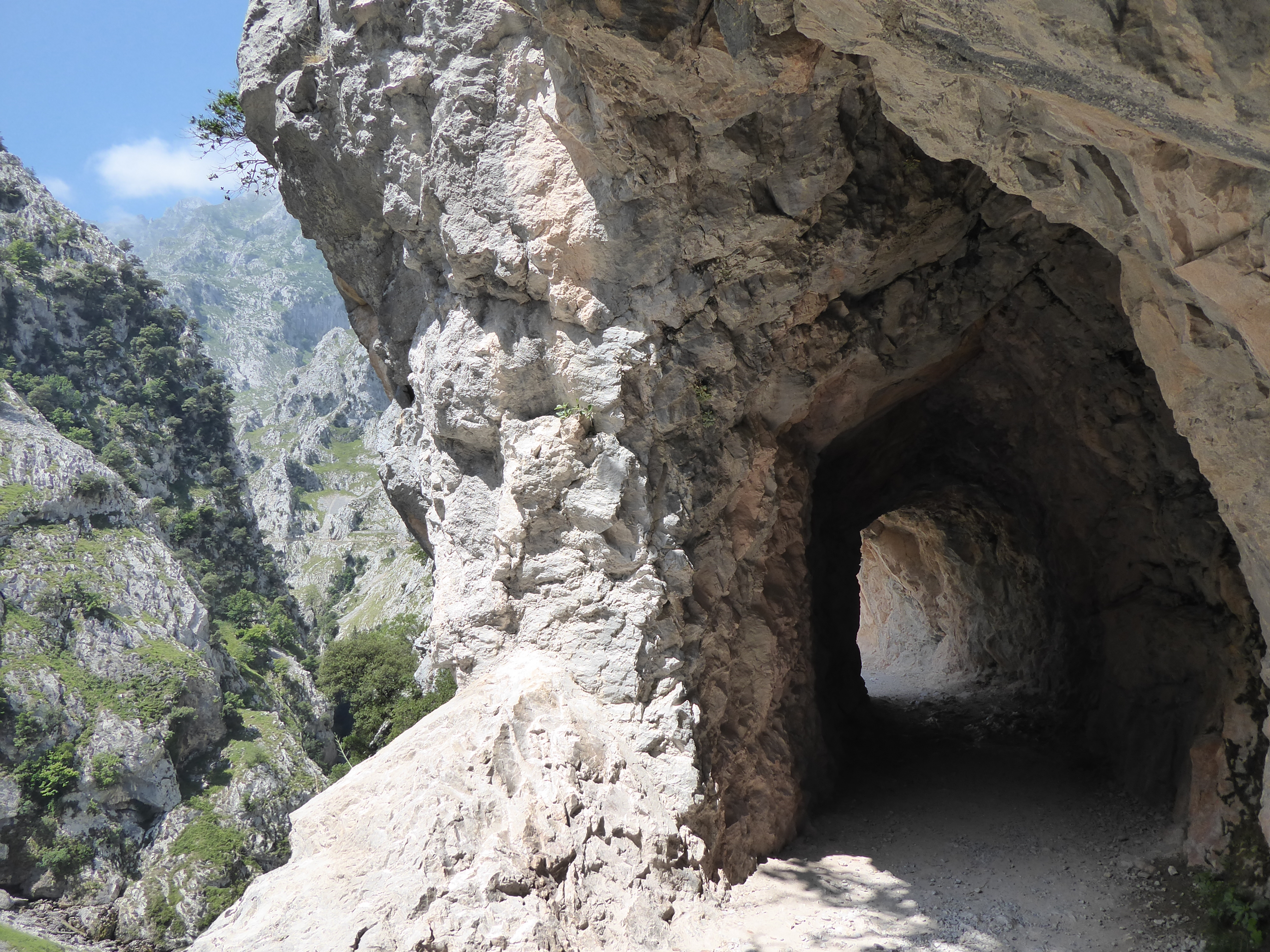
The hike back to Poncebos the following morning was cooler and overcast offering a different range of hues. It was no less impressive to see the sights again.
Before leaving I hiked up to Camarmeña to speak with a beekeeper I had met a few days prior, before setting off for the coast.